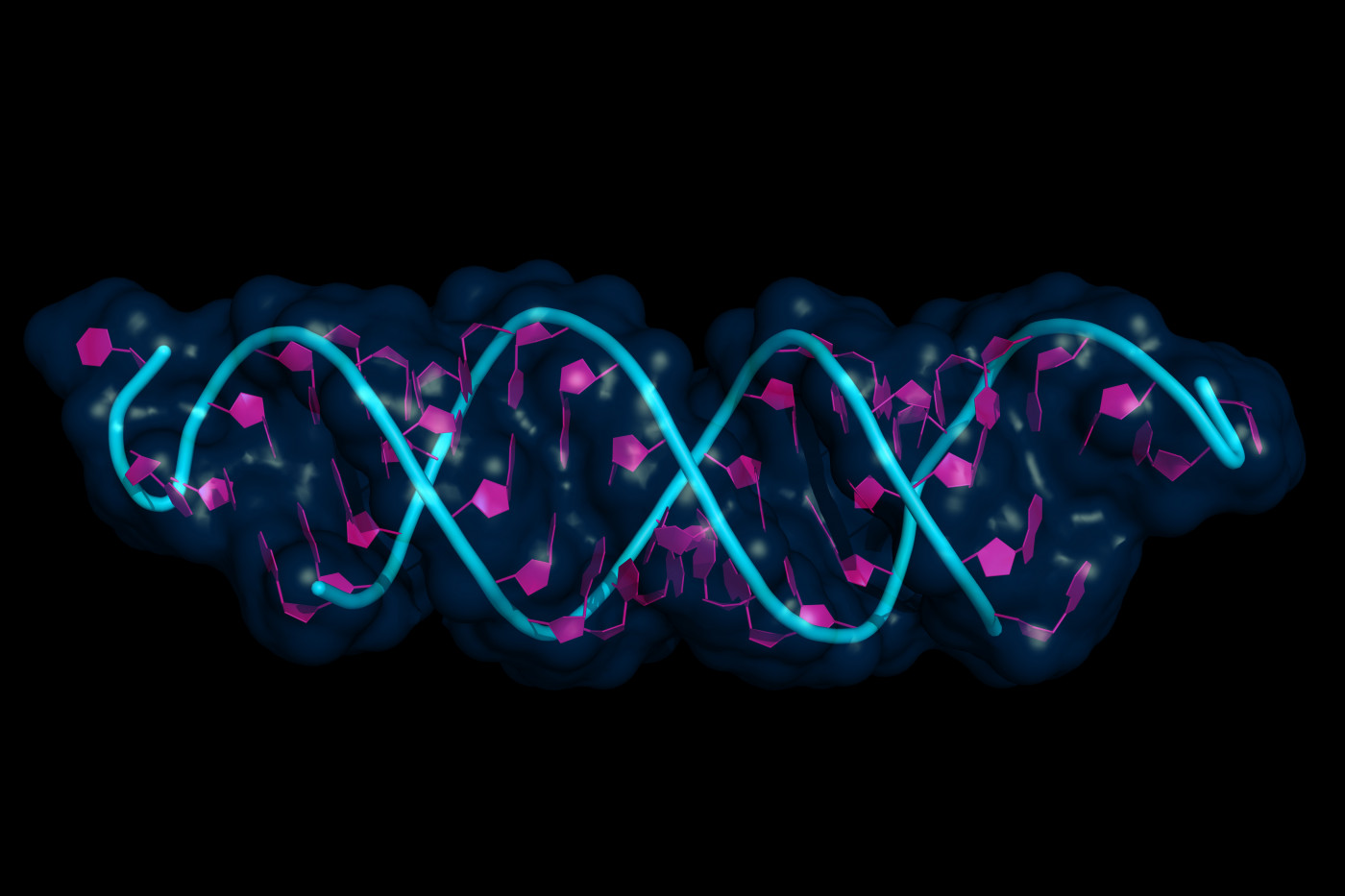RNA Therapy Delivered by Viral Vector May Hold Potential to Treat SMA

A new RNA therapy delivered by a safe adeno-associated viral (AAV) vector, like other gene therapies, may be a way to treat spinal muscular atrophy (SMA), a mouse study shows.
The therapy, called ExspeU1, showed the ability to raise the levels of survival motor neuron (SMN) protein in multiple tissues, including the brain and spinal cord, of mice with mild and severe forms of the disease.
These findings were reported in the study, “Rescue of spinal muscular atrophy mouse models with AAV9-Exon-specific U1 snRNA,” published in the journal Nucleic Acids Research.
SMA results from mutations in the SMN1 gene that disrupt the ability of cells, particularly nerve cells that control movement, to produce the required amount of SMN protein.
Spinraza (nusinersen), developed by Biogen, was the first approved therapy for SMA. It is an RNA therapy that works by “hijacking” SMN2, a gene that is identical to SMN1 and can replace it.
The SMN2 gene naturally drives the production of SMN protein, but because of a difference in the DNA sequence of this gene, around 80% of the time a segment of its coding sequence is skipped, resulting in low production of functional protein. Most of the protein made is shorter and gets destroyed by the cells.
Spinraza works by changing the way SMN2 messenger RNA sequence — the genetic blueprint for producing proteins — is cut (spliced) in order to drive it to produce a functional SMN protein.
The therapy’s active ingredient is an antisense oligonucleotide (ASO), a small synthetic single-stranded RNA molecule specifically designed to pair with the immature SMN2 RNA sequence and change its splicing process.
Despite being a breakthrough in SMA, Spinraza is costly and requires repeated intrathecal injections. Now, a team lead by scientists at the International Centre for Genetic Engineering and Biotechnology, in Italy, believes that this problem could be avoided by delivering long-lasting RNA therapies using adeno-associated virus (AAV) carriers.
AAV vectors “are a safe and reliable way” to durably deliver DNA into cells, that have been viewed as promising and safe shuttles for gene therapy.
The team had already developed an approach that works on the same principle as Spinraza but exploits a different mechanism.
They created an engineered version of a splicing machinery component naturally found in cells called Exon-Specific U1 snRNAs (ExspeU1) targeting the SMN2 gene. Unlike Spinraza, these engineered RNAs promote the readout of the full gene sequence by changing how the cell “reads” the portion that is commonly cut.
In a previous proof-of-concept study, they showed that ExspeU1 was able to rescue SMN levels in mice, with a single copy of ExspeU1 inserted in a cell’s DNA content being enough to increase SMN protein production and prolong the lifespan of mice.
Now, the team took a step further to explore whether delivering ExspeU1 using an AAV9 vector would be more effective and still safe to treat mice with SMA.
Their strategy was designed similarly to a gene therapy. They used a viral vector to deliver the therapeutic sequence, but instead of being a functional copy of the SMN1 or SMN2 genes, they delivered a sequence that encodes ExspeU1.
After testing different doses of AAV9-delived ExspeU1 administered through a single intrathecal injection (directly into the spinal canal), they could determine a dose that could effectively raise the levels of SMN protein in mice with mild and severe SMA.
The therapeutic dose also was shown to improve some signs and symptoms of the disease. In mice with severe SMA, the treatment improved neuromuscular function and increased lifespan from 10 to 219 days.
“These results indicate that AAV-mediated delivery of a modified [splicing machinery] particle may be a novel therapeutic option against SMA,” the researchers said.
ExspeU1 was found to be stably produced for one month after administration, and very low amounts of it were needed to produce an effect.
Additional analysis also revealed that treatment with ExspeU1 could revert some of the most relevant genetic changes caused by SMN deficiency, which are mostly related to DNA damage, cell replication control, and acute phase defense response.
Also, overdosing ExspeU1 at more than 100 times the therapeutic level was found not to have any damaging effects in gene activity or splicing in human cell models.
The extent of improvements induced by systemic treatment of AAV9-ExspeU1, along with the lack of significant off-target effects on the human genetic profile, “are promising for the application of [AAV9-ExspeU1] in the clinic,” the researchers said.
However, researchers stressed that given the long effect observed in mice, careful “preclinical safety studies with different delivery routes” are still warranted “for an extended period of time before planning the advancement into human studies.”







